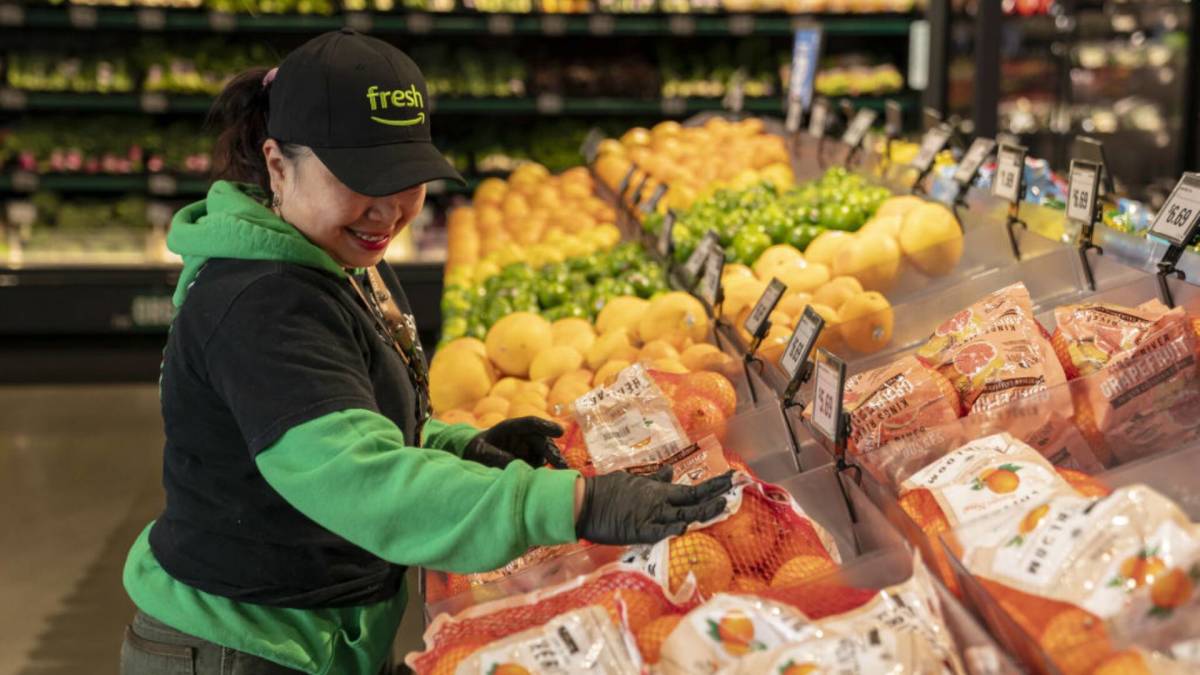Supermarkets operate on razor-thin margins that make it very challenging to make a profit.
“The average net profit for food retailers in 2024 is 1.7%,” according to data from the Food Industry Association (FIA).
To make that small margin, operators stock an average of 31,795 items in stores that average over 42,000 square feet, the FIA shared.
In addition to low margins and expensive stores, traditional supermarkets and grocery stores have to compete with digital rivals. An online-only chain can keep its costs lower by operating out of cheaper warehouse space in less desirable locations.
That business does have a delivery expense, but some, if not all, of that can be passed on to consumers. And while the FIA reported that only 7.1% of all grocery item sales were online, the customers who do shop digitally spend more per visit.
“In 2024, supermarket shoppers sent $45.70 per transaction in-store and $108 per transaction online,” the FIA shared.
That makes it an interesting choice when an online leader tries to add a brick-and-mortar presence in the grocery and supermarket space.

Image source: Ryder/Bloomberg via Getty Images
Amazon Fresh experiment has sputtered
Amazon Fresh was launched to leverage the company’s huge buying power in the brick-and-mortar grocery space. The company had already achieved success with its ownership of high-end grocery chain Whole Foods, a business that generates higher margins because of its premium brands.
By creating a traditional grocery store, Amazon hoped to bolster its digital business while also gaining in-store share.
The company, however, has had more success in growing its online delivery grocery business, which CEO Andy Jassy spoke about during its first-quarter earnings call.
“Even if you exclude Whole Foods Market and Amazon Fresh, Amazon is one of the largest grocers in the U.S. with over $100 billion in gross sales last year,” he shared.
That’s an interesting way to phrase things that points out that company has a massive online grocery ordering business.
“Amazon has chased the grocery market for many years. But without a big store base, it’s hard to win, as most shoppers still buy in person, and proximity is key to delivering perishables efficiently to customers,” Arun Sundaram, senior vice president of equity research at CFRA Research, told Grocery Dive.
Amazon store closures:
- March 2022: Closed all 68 physical stores, including:
- Amazon Books
- Amazon 4-Star
- Amazon Pop Up
- Reason: Poor performance and pivot toward Whole Foods and Amazon Fresh.
- November 2023: Closed Amazon Style clothing stores in Glendale, CA, and Columbus, OH
- Reason: Experiment with tech-integrated shopping didn’t meet expectations.
- October 2025: Closed 4 Amazon Fresh grocery stores in Southern California (Mission Viejo, La Habra, Whittier, La Verne)
- Reason: Streamlining grocery operations to focus on profitable locations.
Amazon makes big bet on online grocery sales
Amazon has essentially paused its Amazon Fresh store openings, while it’s closing select locations in favor of competing with Instacart and other non-store-based grocery delivery options.
Here’s how Amazon’s Prime grocery service works, according to the company:
At $9.99 per month for Prime members, this subscription — which pays for itself after just one delivery order per month — offers unlimited grocery delivery on orders over $35 across Amazon Fresh, Whole Foods Market, and a variety of local grocery and specialty retailers on Amazon.com, and even more convenient delivery and pickup options.
Customers without a Prime membership pay $9.99 a month for the service.
John Clear, a partner at AlixPartners who formerly worked as a buyer for Lidl US, also shared his thoughts with GroceryDive.
“Instacart, Walmart, Kroger and more have proven that while fast delivery is a bonus for customers, it’s not the core presenting problem or primary decision factor for customers — traditional pillars remain key: price, quality, experience and value,” Clear shared.
Largest U.S. retail chains by total sales (2024)
These figures represent the total retail sales for each company, encompassing all product categories, not just groceries:
- Walmart: $568.7 billion
- Costco Wholesale: $184.1 billion
- Kroger: $147.1 billion
- Albertsons Companies: $79.57 billion
- Publix Super Markets: $59.74 billio
Source:NRF
Largest U.S. online grocers
It appears that Amazon would be slightly bigger than Albertsons if only its grocery sales are considered.
- Amazon: $81 billion
- Walmart: $95.8 billion
- Target: $11 billion
- Instacart: $7.5 billion
- Kroger: $13.4 billion
Source: DoorFinder
Related: Amazon made a change to Prime shopping to take on Target, Walmart
#Massive #grocery #supermarket #chain #closing #stores